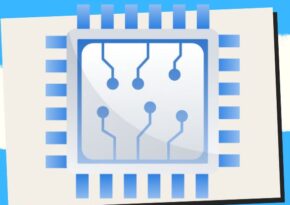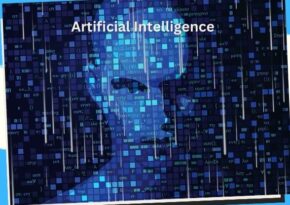
Unleashing AI’s Sequential Brilliance: Recurrent Neural Networks in Action
Discover the brilliance of AI as Recurrent Neural Networks (RNNs) take center stage. Dive into how these networks decode sequential data, transforming AI’s ability to understand and predict.
Unleashing the Power of Recurrent Neural Networks (RNNs): Revolutionizing Sequential Data Analysis with AI 🔄🤖
In the realm of artificial intelligence (AI), few innovations have been as transformative as Recurrent Neural Networks (RNNs). For entrepreneurs and small business owners, aspiring entrepreneurs, coaches and professionals, parents, and families, understanding the remarkable capabilities of RNNs in analyzing sequential data is becoming increasingly important. These neural networks are powering applications that range from natural language processing to time series prediction, fundamentally reshaping our ability to decipher and utilize sequential information. In this comprehensive exploration, we dive into the world of RNNs, uncovering their mechanisms, applications, and impact on the future of AI-driven solutions.
Cracking the Code: The Essence of Recurrent Neural Networks (RNNs)
Recurrent Neural Networks (RNNs) are a class of neural networks specially designed to process sequential data—data that has an inherent order or sequence. Unlike traditional neural networks that process data in isolation, RNNs have the unique ability to maintain a form of memory that allows them to capture dependencies and patterns across sequences.
This “memory” is what makes RNNs exceptionally powerful for tasks such as natural language processing, speech recognition, handwriting recognition, and even tasks involving time series data.
The Heart of RNNs: Understanding Sequence Modeling
At the core of RNNs lies the concept of sequence modeling. In a traditional neural network, each input is treated independently. However, when dealing with sequential data, the order matters. RNNs overcome this limitation by introducing the concept of time steps.
Imagine processing a sentence: “The cat is chasing the mouse.” Instead of treating each word as a separate input, an RNN processes each word in a time step manner. This enables the network to consider the context of previous words while predicting the next word in the sequence.
The Architecture: How RNNs Maintain Memory
The architecture of RNNs is built to maintain a form of memory across time steps. This memory allows the network to capture patterns and dependencies in sequential data. The key component that enables this memory is the hidden state.
In each time step, an RNN calculates a hidden state based on the input data and the hidden state from the previous time step. This hidden state carries information from previous time steps, effectively creating a memory that can influence the network’s predictions in subsequent steps.
The Challenge: The Vanishing Gradient Problem
While RNNs are powerful for modeling sequential data, they face a challenge known as the vanishing gradient problem. When training deep RNNs, gradients (values used to update the network’s weights) can become very small as they are backpropagated through time. This makes it difficult for the network to learn long-range dependencies.
To address this issue, variants of RNNs, such as Long Short-Term Memory (LSTM) networks and Gated Recurrent Units (GRUs), have been developed. These variants introduce gating mechanisms that allow the network to selectively remember and forget information, mitigating the vanishing gradient problem.
Applications: How RNNs Are Transforming Industries
The versatility of RNNs has led to their widespread adoption across various domains, revolutionizing industries and enhancing our ability to analyze and utilize sequential data:
1. Natural Language Processing (NLP)
RNNs have transformed NLP tasks, including language generation, sentiment analysis, and machine translation. They excel at understanding the sequential nature of language and capturing context.
2. Speech Recognition
RNNs power speech recognition systems by modeling the sequential relationships between phonemes and words. They enable accurate conversion of spoken language into text.
3. Time Series Prediction
RNNs are used for time series prediction, forecasting, and anomaly detection in domains such as finance, energy, and healthcare. They can capture trends and patterns in temporal data.
4. Handwriting Recognition
RNNs have applications in handwriting recognition and generation. They can learn the sequential patterns of strokes to accurately recognize handwritten text.
5. Music Composition
RNNs are employed to compose music by learning the sequential patterns present in existing compositions. They can generate new musical pieces that mimic the style of the training data.
The Future: Advancing Sequential Learning with RNNs
As technology continues to evolve, RNNs are poised to play a pivotal role in shaping the future of AI and sequential data analysis:
- Enhanced Architectures: Ongoing research aims to develop more sophisticated RNN architectures that can capture longer-range dependencies and improve performance.
- Transfer Learning: RNNs can be pre-trained on large datasets and then fine-tuned for specific tasks, reducing the need for extensive training from scratch.
- Multimodal Learning: Integrating RNNs with other neural network architectures can enable models to process and analyze both sequential and non-sequential data.
Conclusion: Embracing Sequential Insights with RNNs
Recurrent Neural Networks (RNNs) have opened up a world of possibilities for understanding and leveraging sequential data. By incorporating memory and context into their architecture, RNNs empower AI systems to excel in tasks that involve patterns and dependencies across time.
Stay tuned for more illuminating articles that delve deeper into the realms of AI, machine learning, and their transformative impact. We’ll explore topics such as the evolution of neural network architectures, ethical considerations in AI, and real-life stories of individuals and businesses that have harnessed the power of RNNs for their advantage. The future is dynamic and sequenced, guided by the insights of Recurrent Neural Networks! 🔄🤖
Related Queries
🚀🧠 Unleashing AI’s brilliance: RNNs in action.
🔍📊 Decoding data sequences: RNNs transform AI’s understanding.
⏳🤖 AI’s time travelers: Navigating sequential data with RNNs.
🔓⏳ Breaking barriers in time: RNNs elevate AI’s mastery.
💡🔗 Empowering AI’s memory: Magic of RNNs in sequences.
⌛🔮 From past to future: RNNs drive AI’s learning from sequences.
👂🔍 AI’s sequence whisperers: RNNs redefine understanding.
🔄🔍 Sequencing success: RNNs unlock AI’s proficiency.
🔐🕰️ Cracking the code of time: AI and RNNs in sequences.
🔮🧠 Unraveling time’s mysteries: AI and RNNs in sequences.
Save/Share this story with QR CODE
Disclaimer
This article is for informational purposes only and does not constitute endorsement of any specific technologies or methodologies and financial advice or endorsement of any specific products or services.
📩 Need to get in touch?
Feel free to Email Us for comments, suggestions, reviews, or anything else.
We appreciate your reading. 😊Simple Ways To Say Thanks & Support Us:
1.) ❤️GIVE A TIP. Send a small donation thru Paypal😊❤️
Your DONATION will be used to fund and maintain NEXTGENDAY.com
Subscribers in the Philippines can make donations to mobile number 0917 906 3081, thru GCash.
3.) 🛒 BUY or SIGN UP to our AFFILIATE PARTNERS.
4.) 👍 Give this news article a THUMBS UP, and Leave a Comment (at Least Five Words).
AFFILIATE PARTNERS

World Class Nutritional Supplements - Buy Highest Quality Products, Purest Most Healthy Ingredients, Direct to your Door! Up to 90% OFF.
Join LiveGood Today - A company created to satisfy the world's most demanding leaders and entrepreneurs, with the best compensation plan today.



 Business Technology, Finance Technology & Information Technology
Business Technology, Finance Technology & Information Technology





